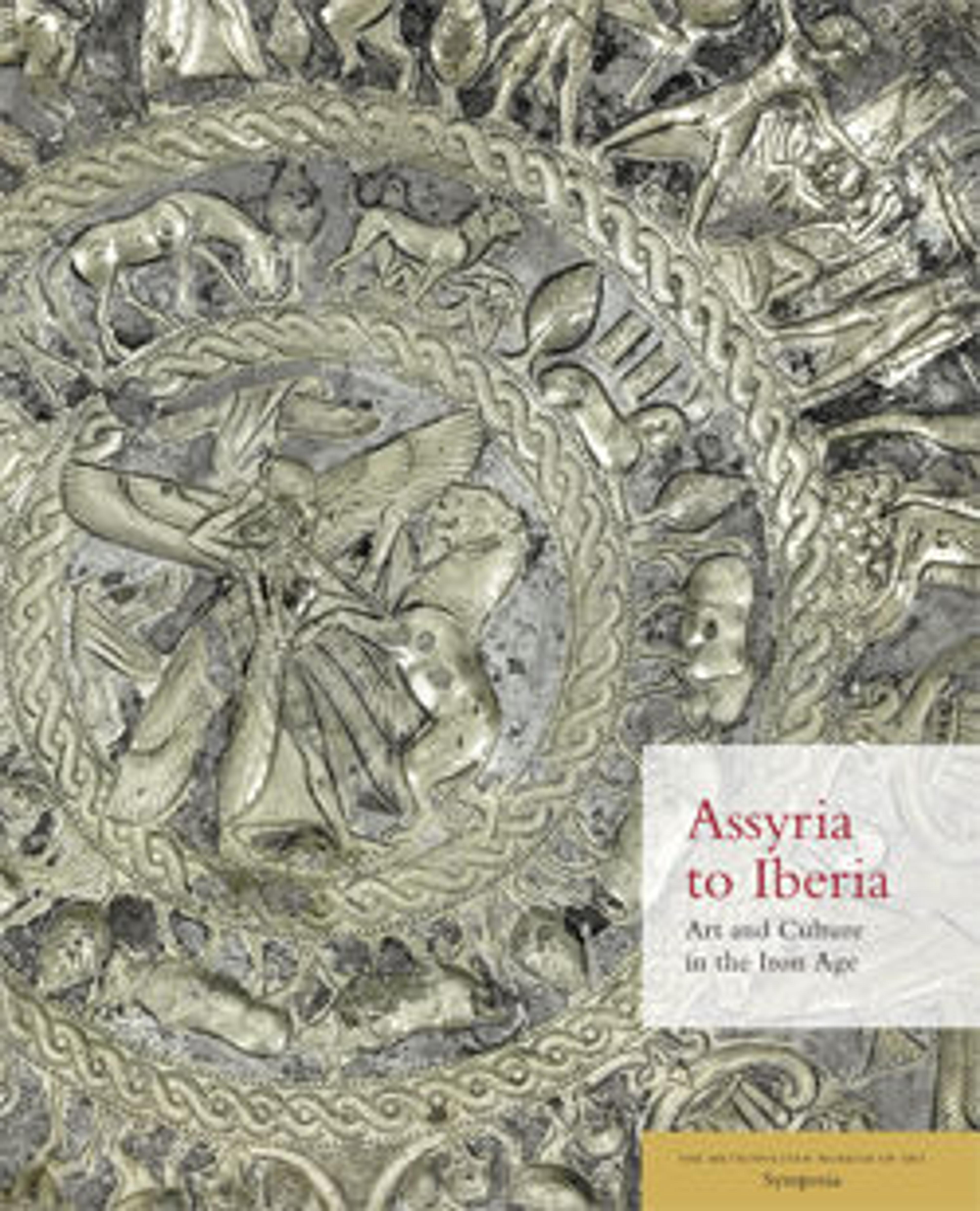Furniture plaque carved in high relief with two Egyptianizing figures flanking a volute tree
During the ninth to seventh centuries B.C., vast quantities of luxury goods, often embellished with carved ivory in local, Syrian, and Phoenician styles, accumulated in Assyrian palaces, much of it as booty or tribute. This plaque, once part of a piece of furniture, is carved in high relief in a typical Phoenician style with Egyptian themes and motifs. Two pharaoh-like figures, standing on either side of a branching tree, wear a version of the double crown of Egypt with the rearing cobra, or uraeus, emblem in front. They also wear a beard, necklace, and pleated short skirt belted at the waist with a central panel decorated with a chevron pattern and uraeus on either side. An ankle-length pleated apron with patterned border falls from behind the figures. Each man holds a ram-headed scepter in his right hand while the figure at left holds a ewer in his left hand; it is unclear what the other man holds. Framed above the scene is a winged sun disk surmounted by a horizontal panel with ten uraei supporting sun disks.
Artwork Details
- Title:Furniture plaque carved in high relief with two Egyptianizing figures flanking a volute tree
- Period:Neo-Assyrian
- Date:ca. 9th–8th century BCE
- Geography:Mesopotamia, Nimrud (ancient Kalhu)
- Culture:Assyrian
- Medium:Ivory
- Dimensions:H. 4 7/8 x W. 3 1/16 x Th. 7/16 in. (12.4 x 7.7 x 1.1 cm)
- Credit Line:Rogers Fund, 1962
- Object Number:62.269.3
- Curatorial Department: Ancient West Asian Art
More Artwork
Research Resources
The Met provides unparalleled resources for research and welcomes an international community of students and scholars. The Met's Open Access API is where creators and researchers can connect to the The Met collection. Open Access data and public domain images are available for unrestricted commercial and noncommercial use without permission or fee.
To request images under copyright and other restrictions, please use this Image Request form.
Feedback
We continue to research and examine historical and cultural context for objects in The Met collection. If you have comments or questions about this object record, please contact us using the form below. The Museum looks forward to receiving your comments.
